STE Cu W16 IEM Cable – The Copper Signal
STE CU W16 is a Copper Cable priced at 400 USD, and designed / created by STE Audio Ferrari or Silverstone Technology Electronic, with a unique construction and ergonomic design. It will be compared to other high-end cables in the price range, including Effect Audio EVO 1 (440 USD), Ares Audio Sakeishi (450 USD), and Dunu Hulk (300 USD). It will also be paired with compatible popular IEMS, including IMR Audio Dark Matter (920 USD), Ambient Acoustics MAD24 (3500 USD), Moondrop Illumination (800 USD).
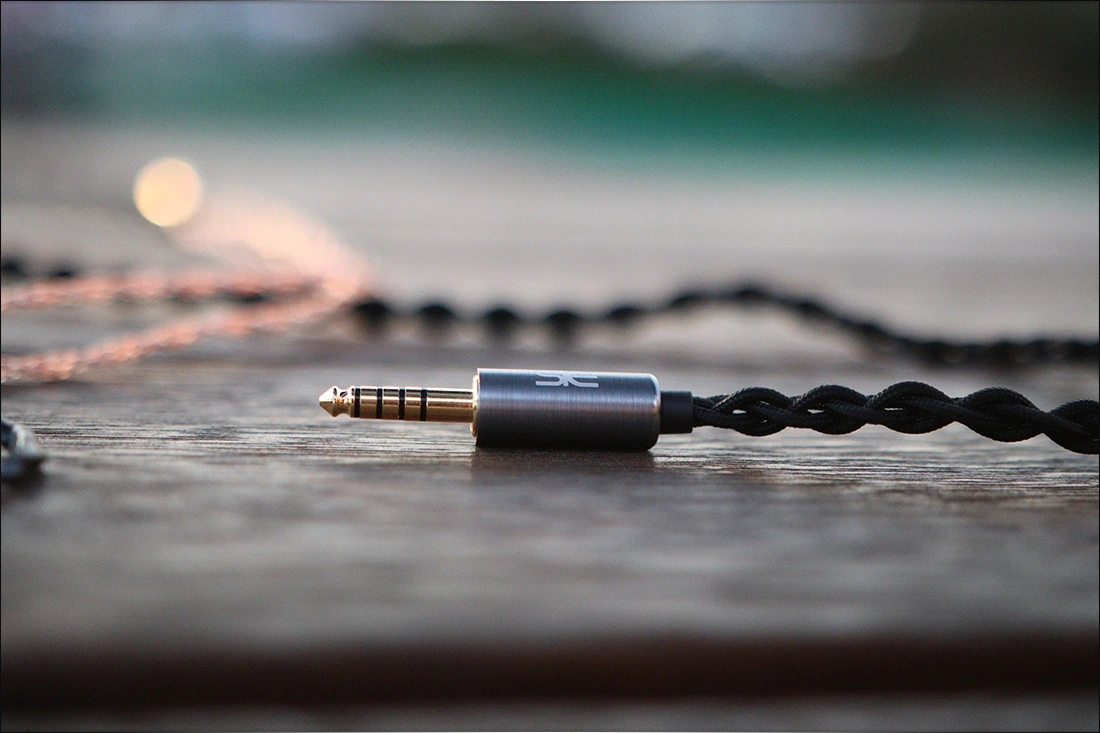
Introduction
STE Audio / Silverstone Technology Electronic is an upcoming company who worked hard and heavily to redesign their website and offer their new audio cables at the best prices possible. They have excellent experience, being in business since 2015, by Ferrari Chau, Gary Lau, Patrick and Harry. They are based in both Taiwan and Hong Kong, doing heavy research on new materials, developing new wire structures and designs for better ergonomics and sonic performance. Currently, most of the development is happening in Taiwan, while production is taking place in Vietnam and Thailand, both countries I collaborated with before, and which have been producing awesome products.
It should be noted that I have absolutely no affiliation with STE Audio. I’d like to thank STE Audio and Ms. Ferrari Chau for providing the sample for this review. This review reflects my personal experience with the STE Cu W16 Cable. Every opinion expressed is mine and I stand by it. The purpose of this review is to help those interested in STE Cu W16 find their next music companion.
Product Link
You can grab one from www.amazon.com here: https://amzn.to/3uIF5Hw
If you’re in the UK, you can grab one from www.amazon.co.uk here: https://amzn.to/3uGT3cU
And if you’re from Europe, you can grab one from www.amazon.de here: https://amzn.to/3JOtyL6
Official Link: https://steaudioferrari.wixsite.com/mysite/cu-w16
Packaging
First things first, let’s get the packaging out of the way:
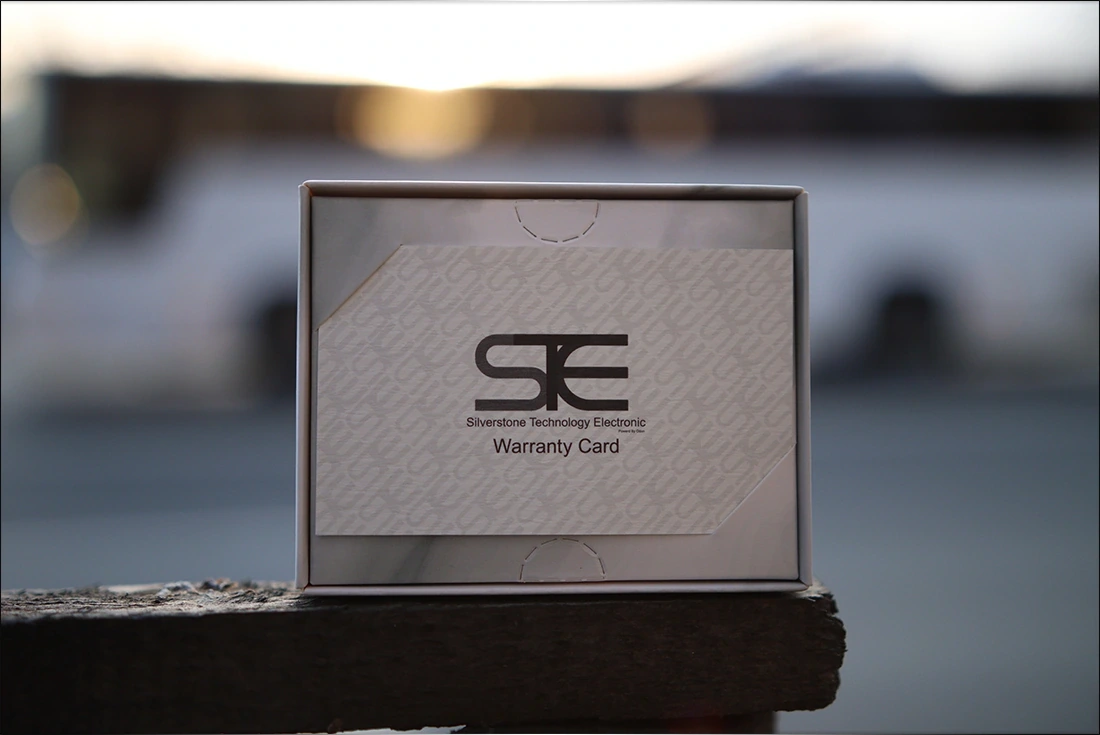
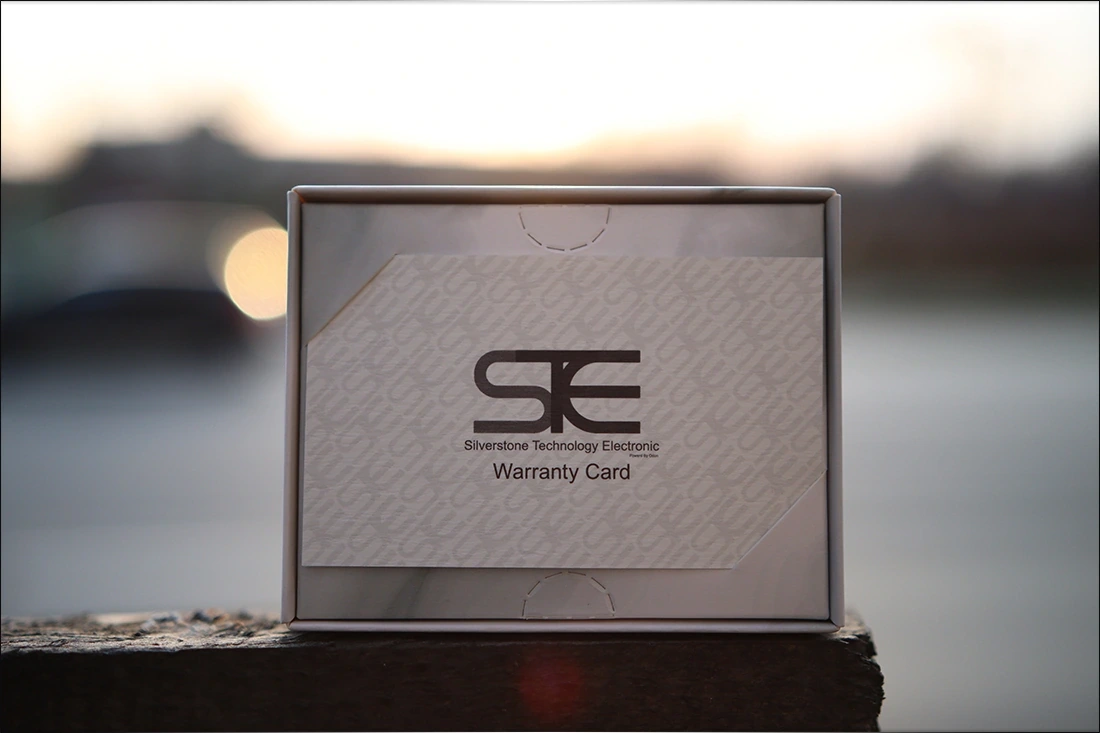
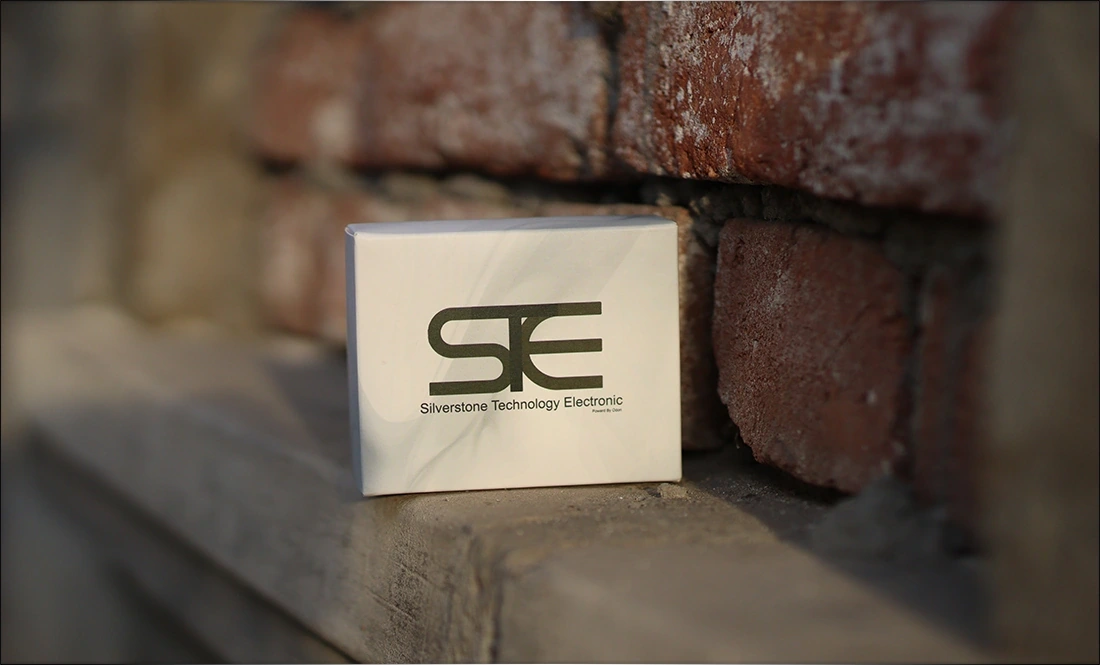
STE Audio has minimalistic packaging for their cables, taking very little space, offering mainly the cable, and their introduction / info card. For the price point, this is comparable with what most of the competition offers, although most of the competition ship their cables in larger, more cleverly designed packages.
Build Quality/Aesthetics/Functionality
Starting with the technical information, Cu W16 is a cable made out of 7N Cu Super NaLite wires, with 16 wires. It uses a solder made of 8% Cu and 92% Sn, and it can be configured for 4.4mm, 3.5mm, 2.5mm or any other jacks you may need. The plugs can be made in 2-Pin type, MMCX, QDC and any other types you may need, and you need to ask personally for the connectors you need.
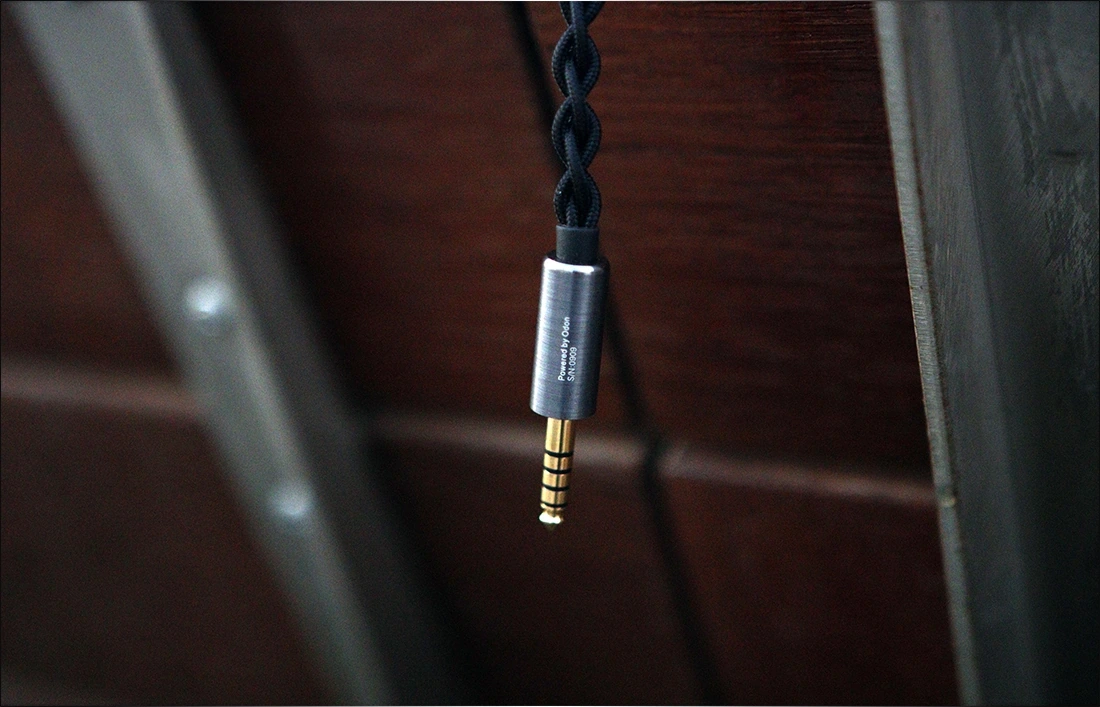
The length can be custom made, to what lengths you may need, but the basic length is 1.5 meters. The price for this configuration is 400 USD, which can vary depending on the length and if you need supplementary options for the cable.
The STE Company actually develops unique technologies for cables, and they have their Nataria System / NaLite design, which is a construction standard for their cables, with multiple coatings for the best EMI rejection and to offer the best balance of sturdiness and flexibility for the cable, along with the best sonic performance.
There are 2 parts to the NaLite System, the one that’s above the Y Split, and the one below. The one below is where there are all 4 wires for the balanced connector, while the wiring has the 7N RF-OCC and the 7N PE-OCC conductors. Above the Y split, we have more information about the configuration of the cable, as we have the 7N Pe-OCC cable covered in a 4u Soft Copper coating, which is shielded in a metal + cotton shielding, above which we can find a 5u silver coating, above which we can find a 3u coating, and at the outermost layer we have the 3u gold coating (optional).
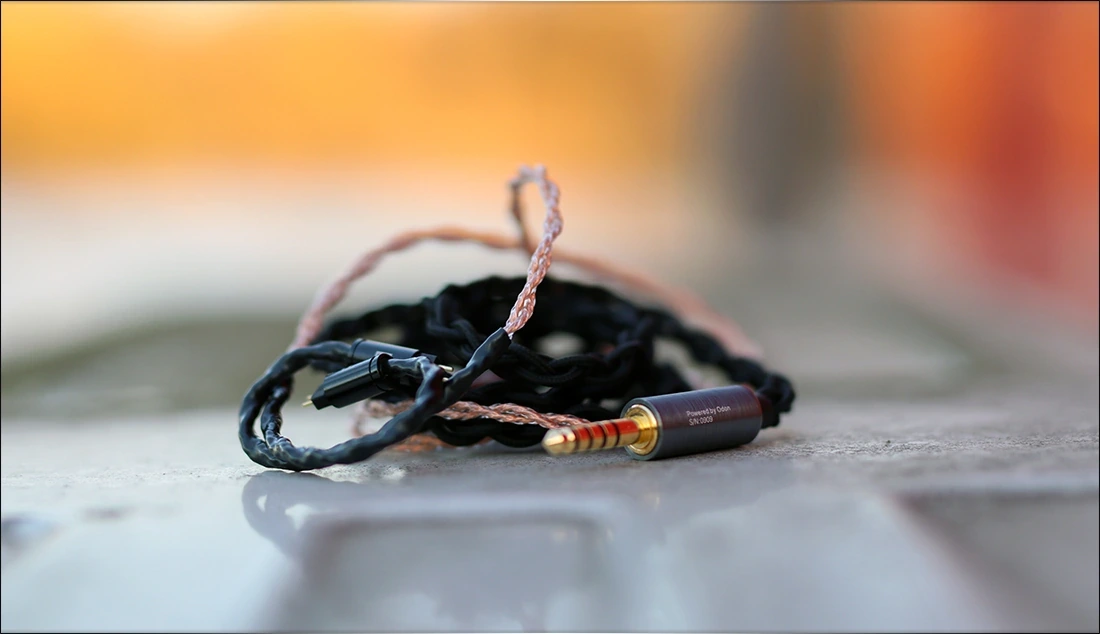
In practice, the cables are very flexible, of a good quality and do not conduct microphonic noise. The build quality is the best from what I’ve seen on cables so far, with no errors on edges, and with a superb overall construction. The wearing comfort is better than what I’ve seen on most default cables, as well as competitors, as STE Cu W16 is really flexible, and the ear guides are super springy, offering good support for the IEMs around your ears.
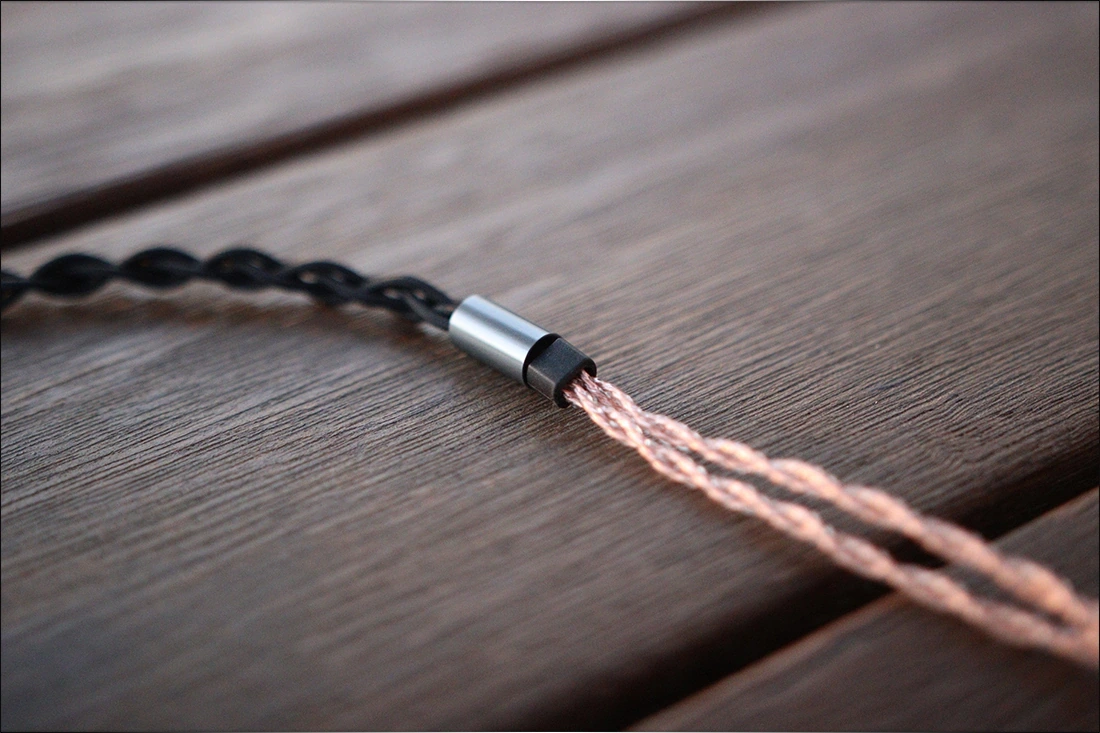
The copper wiring above the Y Split has a beautiful aesthetic, while the black textile jacket below the Y split also looks nice, and the whole cable feels nice while being worn, with no issues I can talk about. The braiding seems to be manually done, but has superb consistency, and the whole cable is neither springy nor tangle prone, making an excellent choice to upgrade the default cables of your IEMs, and making strong competition even for other cables on the market. The best part about the STE CU W16 is that it is extremely light, so it works perfectly for IEMs, where the weight of the cable can be a big problem.
Sound Quality
All the technical information you saw above means very little compared to the importance of the sound, and STE CU W16 really sounds worthy of your time and ears, if you appreciate a thick, smooth signature with a full body and a lush bass. The way copper cables sound is usually similar, they are different degrees of thick, warm and smooth, and this is super awesome, because usually you want your music to sound fuller, deeper and more enjoyable, and STE CU W16 tends to be the most effortless, least harsh most natural, and most fluid of all the cables I reviewed in the price range.
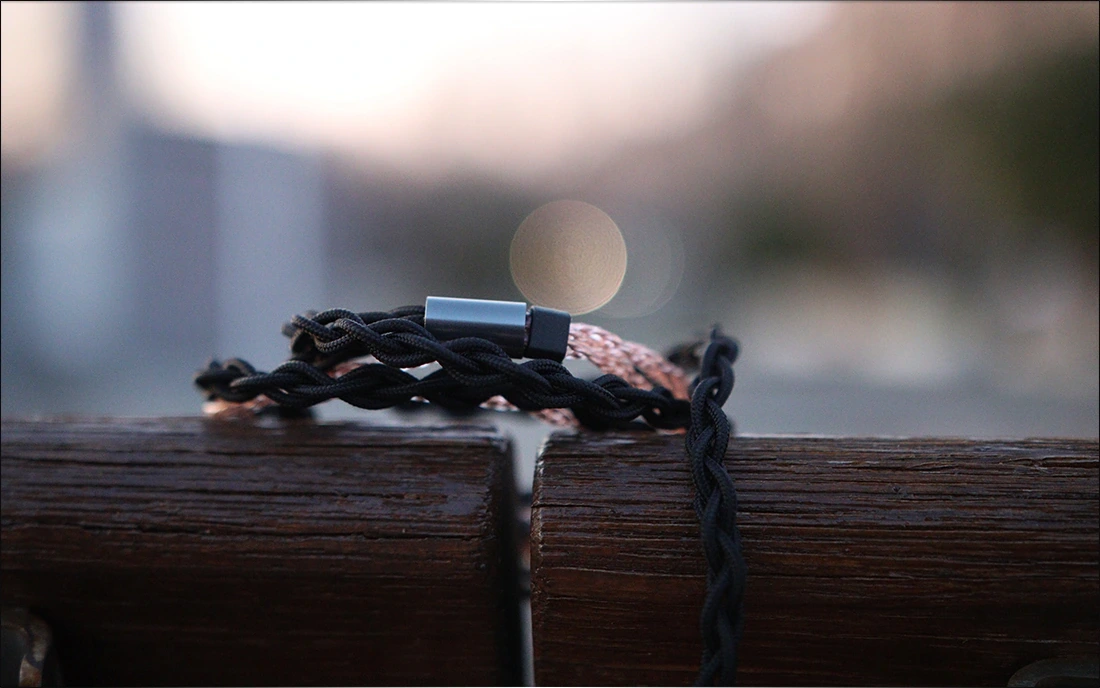
You should keep in mind that the sonic impressions are subjective, no ABX was possible since I don’t have multiple IEMs I can quickly swap the cables of, and while I did volume matching while testing, the time it takes to change the cable on an IEM is within a few minutes, since 2 Pin connectors are quite tight. You should take my impressions here with a grain of salt, and keep in mind that as I always try to recommend, the importance of your listening system has the Speakers / IEMs / Headphones at the top, Amplifier next, then the DAC, then the Cables. This being said, cables can bring subtle, but noticeable changes to the sound of an IEM. In my overall experience, IEMs are slightly more sensitive to cable changes than headphones, and speakers are about as sensitive as cables are.
STE Cu W16 has a really magical signature, which has a natural speed, and is deeper, more weighty and thicker than the default cables I got with most IEMs. Cu W16 manages to sound really pleasing to the ear, euphonic and fluid, effortless and fun. Despite its more bold signature in the lows, it still manages to have a beautiful amount of detail, clarity and overall precision, music staying extremely clean and clear. In fact, this is why most people try to upgrade the cables when they want a thicker sound, rather than using EQ. Most IEMs and Headphones do not have enough headroom for you to increase just the thickness or the depth of an IEM, and overdoing it will introduce distortions or reduce clarity, while using STE Cu W16 in particular achieves a really lush and clean sound that’s detailed and resolute. It ain’t just bass, it is bass and everything else.
Speaking of which, the bass when using STE Cu W16 always sounds deeper, more lush and more full than the cables most IEMs originally come with. The bass of Cu W16 is extremely pleasing, hits deep and has slightly better presence than when using the default cable of most IEMS, or compared to when using Ag W16 also made by STE. The bass of Cu W16 is natural in speed, and usually it doesn’t slow down or speed up an IEM, letting the original character of the IEM shine through.

The midrange is the biggest surprise. I’m used to copper cables below a certain price point cutting some of the resolution from the IEMs they are connected to, but STE CU W16 seems to refine on the detail that the IEMS already have, and instead of reducing it, they smooth out all the hard edges, and make both micro details and macro details much easier to notice, STE CU W16 improves o the overall soundstage depth and instrument separation and blackens the background in most songs, resulting in a really pleasing presentation. The dynamics are also better than with all default cables for all the IEMs I tested. Even better, I love how STE CU W16 adds quite a bit of weight to each instrument, but also reduces the harsh and fatiguing peaks in the upper midrange / lower treble on IEMs that present such peaks, like Moondrop Illumination. All textures are a bit smoother with STE Cu W16.
The treble of STE Cu W16 is smoother, cleaner and usually reduced in presence compared to the default cables of most IEMs. STe Cu W16 doesn’t really cut on the resolution or clarity, but it tends to reduce the intensity of the treble, especially the lower treble, without cutting out the air or presence of cymbals in the upper treble, giving a good fix for hot or harsh sounding IEMs. I liked the overall treble quite a lot with IMR Acoustics Dark Matter, and also loved the full bass. That being said, the sound can be on the darker and really lush / smooth side with Ambient Acoustics MAD 24, where STE Cu W16 has a pretty noticeable effect, and can impose its thicker, fuller character quite a bit.
Comparisons

STE CU W16 vs Ares Audio Sakeishi (400 USD vs 450 USD) – Sakeishi provides a more edgy sound with a more forward midrange, and less emphasis on smoothness and thickness than STE CU W16. I generally prefer STE CU W16 when I’m in the mood for some smooth Jazz, or when I’m pairing it with a brighter, more energetic sounding IEM, and when I want to tone down some of the treble the IEM has. STE CU W16 tends to have the same amount of details as Sakeishi, but present music more fluid, more effortless and with more body, where Sakeishi is more energetic. Both are very good in the ergonomics, both are great when it comes to aesthetics, but Sakeishi has a slightly more fun look, while STE CU W16 is more flexible and is better if you’re on the go.
STE CU W16 vs Dunu Hulk (400 USD vs 300 USD) – We have a really thick cable with Hulk, both in physical thickness and sonic thickness. The overall ergonomics of the Hulk are much worse, and despite the fact that it has a modular design, and you can use it with basically any plug, it is not ergonomic at all, being too thick, heavy and rigid for IEMS, and making a poor choice if you ever plan on moving while wearing the cable. STE CU W16 has a more natural, snapper sound with slightly more detail, while Hulk has a darker, thicker, smoother sound that is a bit deeper. STE CU W16 has better soundstage width and instrument separation, highlighting micro details better than Hulk, which tends to smooth those out.
STE CU W16 vs Effect Audio Evo 1 (400 USD vs 440 USD) – In terms of ergonomics, STE CU W16 is more flexible, more portable than Effect Audio EVO 1, but EVO 1 lets you see what’s inside the cable as far as the wires go. The sonic presentation is extremely different, and EVO 1 is a unique cable, it has a lot of texture and reveals details really easily, being considerably more forward and aggressive sounding than STE CU W16 which sounds much smoother, more fluid, more effortless, cleaner, deeper and wider. EVO 1 has a punk kind of sound where it has a ton of detail, is forward and aggressive, STE CU W16 having a natural kind of sound that is enjoyable with basically all music styles.
Pairings
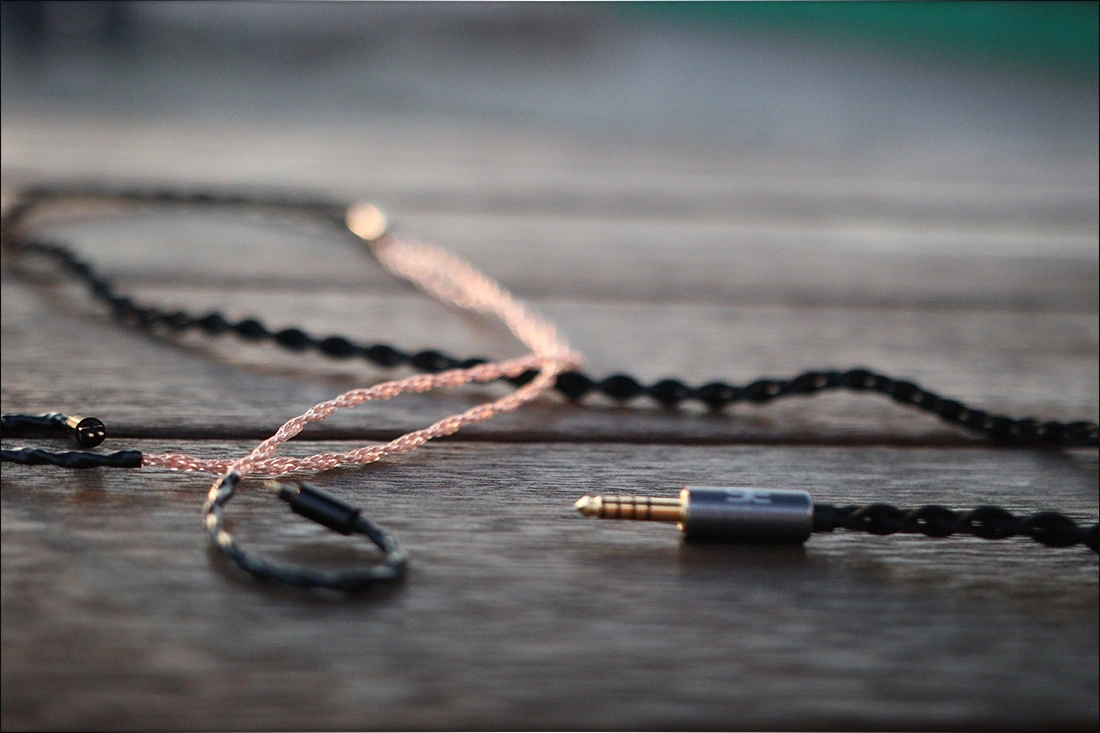
STE CU W16 vs + Moondrop Illumination (400 USD + 800 USD) – Moondrop Illumination is one of the IEMS that really improve drastically with a cable upgrade, especially when the cable darkens their sound, which can be a bit bright and fatiguing. They become fuller sounding, smoother and less fatiguing, with a much more natural and cleaner sound, a deeper and wider soundstage, and a better micro detail presentation.
STE CU W16 vs + Ambient Acoustics MAD24 (400 USD + 3500 USD) – MAD 24 is a high-end IEM that comes with the price tag of a good used car, but does not come with a very interesting cable, STE CU W16 offering rather large improvements to its sonic presentation. Although MAD24 already sounds smooth and warm, with a full presentation, STE CU W16 helps it a lot when it comes to the resolution and overall bass volume and depth. MAD 24 has a notoriously low impedance, which can give them problems with most sources, but they pair well with STE CU W16, and there’s no large change in how they behave source wise.
STE CU W16 vs + IMR Audio Dark Matter (400 USD + 920 USD) – Although it may seem wrong to pair STE CU W16 with Dark Matter, as Dark Matter has a high-end cable already, I like the sound of Dark Matter much much more when using STE CU W16. The overall sonic is smoother, fuller, and even more effortless, making Dark Matter an even more musical and enjoyable IEM. I also made pairings with the STE AG W16, and the sound is awesome with that one too, Dark Matter showing an increase in the overall detail and resolution. The ergonomics are also slightly better than its default cable, which is a bit thicker, more rigid and less flexible than STE CU W16.
Value and Conclusion
At first I wasn’t quite sure if STE Audio stood on equal grounds with other older, larger cable companies, but having tested their Cu W16 cable, I think that all they need is to think of better names, because they surely got the sound and build quality right for the price they’re having, and they provide an excellent price / performance ratio with their cable. As always, it is best to think of investing in the IEMs and the source before the cable, because usually those have a higher impact on the final sound, but Cu W16 provides a really nice ergonomic and usability, plus a sweet, delicate sound that’s slightly different than what we’re used to seeing with copper cables.

The package is very minimalistic, but at the end of the day, we usually throw those away, and we’re left with the product, which in Cu W16’s case, is a really awesome cable, with excellent ergonomics, a really smooth and refined presentation, and tons of detail, and with a god reliability.

At the end of the day, if you’re looking for a high-end cable that’s not priced insanely high, with a really smooth, musical and clean presentation, a full and delightful bass, and with tons of details, plus excellent ergonomics and a very balanced presentation, then STE or Silverstone Technology Electronic W16 Series Cu or Copper Cable will totally deliver, and is one of the best cables I’ve seen in both ergonomics and build quality.
Product Link
You can grab one from www.amazon.com here: https://amzn.to/3uIF5Hw
If you’re in the UK, you can grab one from www.amazon.co.uk here: https://amzn.to/3uGT3cU
And if you’re from Europe, you can grab one from www.amazon.de here: https://amzn.to/3JOtyL6
Official Link: https://steaudioferrari.wixsite.com/mysite/cu-w16
--- Please remember to stay safe, and always have fun while listening to music!---
- If you have a dime to spare, please donate, and help us! It would make the day brighter for me and my wife-
Full Playlist used for this review
We listened to more songs than those named in this playlist, but those are excellent for identifying a sonic signature. I recommend trying most of the songs from this playlist, especially if you’re searching for new music! The playlists are different for Spotify, Tidal and Youtube, and based on the songs I enjoy and are available on each!
https://www.youtube.com/playlist?list=PL_cjBXGmwSHSdGcwuc_bKbBDGHL4QvYBu
https://open.spotify.com/playlist/5J3oloz8Riy9LxEGenOjQ0?si=979ba4f082414be7
https://tidal.com/browse/playlist/330fd544-8e5b-4839-bd35-676b2edbb3d5
--- Contact Us ---






[…] It will be compared to other cables I previously reviewed on Audiophile-Heaven, including STE Cu W16 (400 USD), Effect Audio EVO 1 (440 USD), and Ares Audio Sakeishi (450 […]